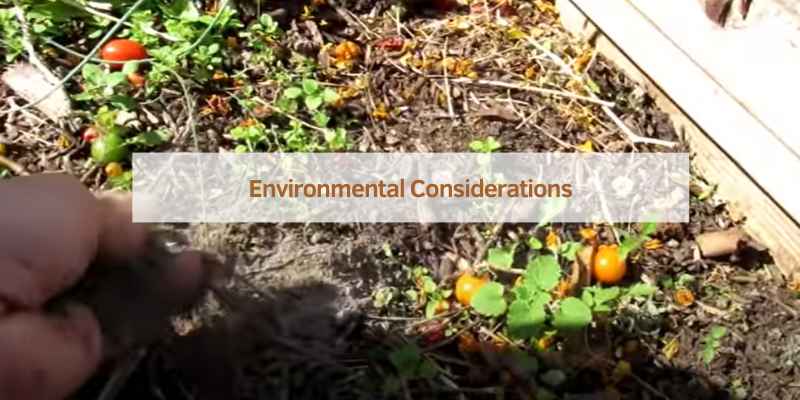Use one to two pounds of wood ash per 100 square feet of garden soil. Apply sparingly to avoid over-alkalizing.
Wood ash is a valuable soil amendment for gardens. It contains essential nutrients like potassium and calcium. Proper usage can enhance soil fertility and improve plant health. Always test your soil pH before application. Too much wood ash can raise soil pH to harmful levels.
Spread evenly and mix well into the soil. Avoid using wood ash on acid-loving plants. It is best suited for vegetables and flowering plants. Store wood ash in a dry place before use. Ensure it’s from untreated wood to avoid chemical residues. Regular monitoring of soil conditions is crucial for optimal garden health.
Benefits Of Wood Ash In Gardening
Wood ash enriches soil with essential nutrients and raises pH levels. Use sparingly, about 1 pound per 100 square feet, to avoid over-alkalizing.
Rich In Potassium And Calcium
Wood ash is a great source of potassium and calcium. These nutrients help plants grow strong. Potassium helps flowers and fruits bloom. Calcium strengthens plant cell walls. Both nutrients improve soil health.
Ph Level Adjustment
Wood ash can change the pH level of soil. It makes acidic soil more neutral. Most plants prefer neutral soil. This helps plants absorb nutrients better. Always test your soil before adding wood ash.
Pest Deterrent Properties
Wood ash can help keep pests away. It acts as a barrier against slugs and snails. Sprinkle ash around plants to protect them. It also helps repel some insects. This makes it a natural pest control option.

Precautions Before Using Wood Ash
Use clean, untreated wood for ash in the garden. Avoid using wood from construction sites. This wood may contain harmful chemicals. Natural, unpainted wood is the best choice. Ensure the wood is free of nails and other metals.
Treated wood ash can harm plants. Painted wood ash may contain toxic substances. Never use these types of ash in your garden. Stick to natural wood for safe use.
Test the soil pH before adding wood ash. Wood ash can raise soil pH levels. Ideal soil pH for most plants is between 6 and 7. Avoid using wood ash if soil pH is already high. Use pH testing kits available at garden stores.
Optimal Application Rates
Wood ash is a great addition to the garden. It helps improve soil pH levels. This makes the soil less acidic. Use wood ash sparingly to avoid problems. Too much can harm plants. A small amount goes a long way. 1-2 pounds of wood ash per 100 square feet is ideal.
Sandy soils benefit from wood ash. It helps retain moisture. Clay soils can also use wood ash. It improves soil structure. Loamy soils are balanced. Add wood ash lightly to these soils. Always test soil pH before adding wood ash. This ensures the right amount is used.
Seasonal Considerations For Wood Ash
The best time to apply wood ash is in the late winter or early spring. Soil can absorb nutrients well during this time. Avoid spreading ash in the fall. Too much rain can wash it away. Make sure soil is moist but not wet. Applying ash in the spring helps plants grow strong. This is because nutrients are available right when plants need them.
Always adjust the quantity of wood ash based on the season. Use less ash in the winter. Soil is less active and can’t absorb much. Use more ash in the spring. This helps support plant growth. Be careful not to over-apply. Too much ash can harm plants. Test your soil regularly. This will help you know how much ash to use each season.
Application Techniques For Wood Ash
Wood ash can be spread directly on the soil. Use a thin layer to avoid build-up. Too much ash can harm plants. Spread the ash evenly. Make sure it does not form clumps. Avoid applying ash when it is windy. This helps to prevent ash from blowing away. Water the soil after applying ash. This helps the nutrients to penetrate the soil.
Mix wood ash into the soil well. Use a garden fork or tiller. This helps to distribute the ash evenly. Avoid using ash near acid-loving plants. Wood ash raises soil pH. Best for neutral or alkaline soils.
Complementary Practices With Wood Ash
Wood ash can enhance garden soil, but moderation is key. Use about 10-15 pounds per 1,000 square feet for best results. Test soil pH first to avoid over-alkalizing.
Composting With Wood Ash
Mix wood ash with compost to boost soil nutrients. Ash adds potassium and calcium. These help plants grow strong. Spread a thin layer of ash in your compost pile. Too much can make the soil too alkaline.
Combine wood ash with food scraps and leaves. This mix makes rich compost. Turn the compost often. This ensures even mixing.
Combining With Other Organic Matter
Wood ash works well with kitchen scraps. Use it with vegetable peels and coffee grounds. These add nitrogen to the compost. Balance is key for healthy soil. Too much ash can harm plants.
Grass clippings are also good to mix. They decompose quickly. Wood ash helps them break down faster. Always use small amounts of ash. This keeps the soil healthy for your garden.
Crops That Benefit From Wood Ash
Tomatoes love wood ash. It provides them with calcium. Carrots also benefit from wood ash. It helps them grow strong. Lettuce appreciates the extra nutrients. Potatoes enjoy wood ash too. They grow bigger and healthier. Peas can thrive with wood ash. It helps them produce more pods.
Blueberries hate wood ash. It makes the soil too alkaline. Raspberries also dislike it. They prefer acidic soil. Azaleas should avoid wood ash. They need a different pH balance. Rhododendrons do not benefit from wood ash. It can harm their growth. Hydrangeas are another plant to avoid. They thrive in acidic soil.
Monitoring And Adjusting Wood Ash Use
Properly monitor and adjust wood ash use in your garden to balance soil pH levels. Apply sparingly, as excessive amounts can harm plants. Regularly test soil to ensure optimal nutrient conditions.
Observing Plant Responses
Always watch your plants closely. Yellow leaves or stunted growth can mean too much wood ash. Healthy plants with bright green leaves mean the ash is helping. Make notes of any changes in your garden. Different plants may react in different ways. Adjust the amount of ash based on plant health. Less is more when you start. Increase slowly if needed. Overuse can harm your garden. Balance is key for healthy growth.
Soil Testing For Continued Management
Test your soil before adding more wood ash. Soil tests tell you the pH and nutrient levels. Kits are cheap and easy to use. Follow the instructions on the kit. Check the pH every few months. Ideal pH for most plants is between 6.0 and 7.0. Too much ash can raise the pH too high. Add ash slowly and recheck the soil. Adjust as needed for best results. Healthy soil makes for healthy plants.
Environmental Considerations
Wood ash can be good for your garden. But excess ash needs safe disposal. Too much ash can harm plants and soil health. Use only a small amount in your garden. Store extra ash in a metal container. Keep it away from water sources. Do not dump ash in rivers or lakes. It can pollute water and hurt wildlife.
Wood ash can change soil pH. This can affect local plants. Some plants need acidic soil. Too much ash can make soil too alkaline. This can harm these plants. Use ash in areas with acidic soil. Always test soil pH before adding ash. Balance is key for a healthy garden.

Frequently Asked Questions
Can You Put Too Much Wood Ash In Your Garden?
Yes, you can add too much wood ash to your garden. Excessive ash can raise soil pH levels, harming plants. Use sparingly.
Which Vegetables Do Not Like Wood Ash?
Vegetables like potatoes, tomatoes, and peppers do not like wood ash. They prefer acidic soil conditions.
How To Apply Wood Ash To A Garden?
Apply wood ash to your garden by sprinkling it evenly on soil. Mix it into the top 6 inches. Avoid using around acid-loving plants. Use about 10-15 pounds per 1,000 square feet. Water thoroughly after application.
What Plants Benefit Most From Wood Ash?
Plants that benefit most from wood ash include tomatoes, carrots, and potatoes. Wood ash raises soil pH and adds nutrients. Use it sparingly for best results.
Conclusion
Wood ash can be a beneficial addition to your garden. Use it in moderation for best results. Always test your soil first. Apply the ash evenly and avoid overuse. This ensures your plants receive essential nutrients without harm. Follow these guidelines, and your garden will thrive with the right amount of wood ash.


